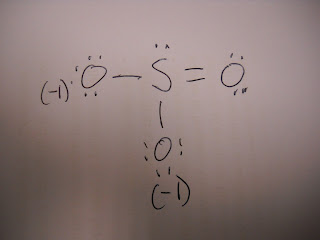Introduction
- In this lab we performed a single displacement reaction in which we combined copper sulfate (CuSO4) and Aluminum powder.
- The Aluminum replaced the copper in the copper sulfate for it is higher in the activity series than copper.
- Before we combined these reactants we determined the theoretical yield and the limiting reagent of the reaction.
Hypothesis
- Leading up to this lab we hypothesized that the aluminum would replace the copper otherwise there would be no point in doing this lab.
- But we had no idea which would be the limiting reactant or what the theoretical byield would be until we preformed our calculations.
- We did hypothesize that the actual yield would be less than the theoretical yield .
Materials
- Filter paper
- Scale
- Beaker
- Scoopula
- Aprons
- Goggles
Procedure
- We obtained 9.12g of copper sulfate, 82.51 mL, and 0.851g of aluminum.
- We determined the limiting reactant by preforming a calculation in which we used the weight of the aluminum that we had and calculated how much copper we would have gotten if we had comibined it with an excess of copper sulfate and did the same with copper sulfate had we had an abundance of aluminum.
- To determine the theoretical yield we took the smallest value of copper that would've been produced from the equations in part b and that is our theoretical yield.
- We weighed them all out using the scale and laying them on piece of filter paper after we weighed the paper by itself and subtracting this weight from the weight of the substance.
- We heated the water in a beaker with a Bunsen burner and allowed the copper sulfate to dissolve in it completely.
- We then added the aluminum and waited while the reaction took place.
- After letting it sit for about 15 minutes we filtered it through a sheet of filter paper which held the copper and let the rest drain away (disposing of it afterwards).
- Then we weighed the copper and recorded the results.
Data
Reactants
- Copper Sulfate-9.12 g
- Water-82.51 mL
- Aluminum-.851 g
Yield
- Theoretical Yield-3.10
- Actual Yield-.51
- Percent Yield-16%
- Limiting Reactant-Aluminum
Data Analysis
- Our percent yield of 16 percent indicates that we got 16% of the aluminum that we would expect in ideal conditions.
Evaluations
- The strengths of this lab were its simplicity and ease to do in the class room.
- The weakness was the time constraints of the class period for a reaction that takes place relativly slowly.
Discussion
- This lab would've yielded a higher percent of the copper we expected had we increased the temperature of the water, allowed it to sit longer, or added a catalyst.
- A metal that ranked higher on the activity series than aluminum could've possibly increased the rate at which the reaction took place as well.
- Given the amount of time we let the reactants sit and the temperature that they were at, we yielded a decent amount of copper.
Conclusion
- In conclusion we could've yielded more copper had we allowed the reaction to take place longer.
- The differance of these two elements in the activity series is what allowed this reaction to take place.
- If we would've added a catalyst it would've sped up the process and resulted in more copper yield.
- The copper we got sunk to the bottom which in this kind of reaction makes it a precipitate.


















